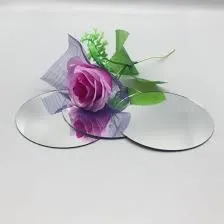

The Benefits of Triple Low-E Glass Enhancing Energy Efficiency and Comfort
In the modern construction and renovation landscape, energy efficiency and comfort are paramount considerations for homeowners and builders alike. One of the most effective ways to achieve these goals is through the use of triple low-emissivity (low-E) glass. This innovative glazing technology is rapidly gaining popularity due to its numerous benefits, including improved thermal performance, noise reduction, and enhanced aesthetic appeal.
At its core, triple low-E glass consists of three layers of glass separated by insulating gas, typically argon or krypton, which serves to minimize heat transfer. The low-E coating, applied to one or more of the glass layers, reflects infrared energy while allowing natural light to pass through. This unique combination results in exceptional thermal insulation properties, making homes significantly more energy-efficient. Studies indicate that using triple low-E glass can reduce heating and cooling costs by up to 30%, which translates to substantial savings over time.
The Benefits of Triple Low-E Glass Enhancing Energy Efficiency and Comfort
Beyond thermal performance, triple low-E glass also offers significant noise reduction benefits. In urban areas or noisy environments, the an additional layer of glass combined with gas fills can dampen external sounds, providing a more tranquil indoor atmosphere. This is particularly beneficial for homeowners living near busy roads, airports, or other sources of noise pollution. By improving sound insulation, triple low-E glass enhances the overall comfort of a home, allowing residents to enjoy their living spaces more fully.

Aesthetics is another factor to consider. Triple low-E glass can be produced in various tints and finishes, allowing homeowners and architects to achieve the desired look for their building projects. The clarity and color options available with modern low-E coatings enable design flexibility, making it easier to meet both style and sustainability objectives.
Moreover, the durability of triple low-E glass enhances its long-term value. Its robust construction is resistant to condensation, fogging, and scratches, ensuring that it maintains its clarity and efficiency over many years. When properly installed and maintained, this high-performance glazing can last a lifetime, making it a wise investment for any residential or commercial property.
While some may be hesitant about the initial cost of upgrading to triple low-E glass, it is essential to consider the long-term savings and benefits it provides. Not only do homeowners save on energy bills, but many regional and national programs offer incentives for implementing energy-efficient upgrades, further offsetting the cost.
In conclusion, triple low-E glass represents a significant advancement in building technology, offering a variety of benefits that enhance energy efficiency, comfort, and aesthetics. With its ability to reduce energy consumption, lower utility costs, and improve indoor environments, it’s no surprise that this innovative glass is becoming the preferred choice for architects and homeowners alike. As the demand for sustainable living solutions continues to grow, investing in triple low-E glass can be seen not just as a practical decision, but as a step towards a greener future.